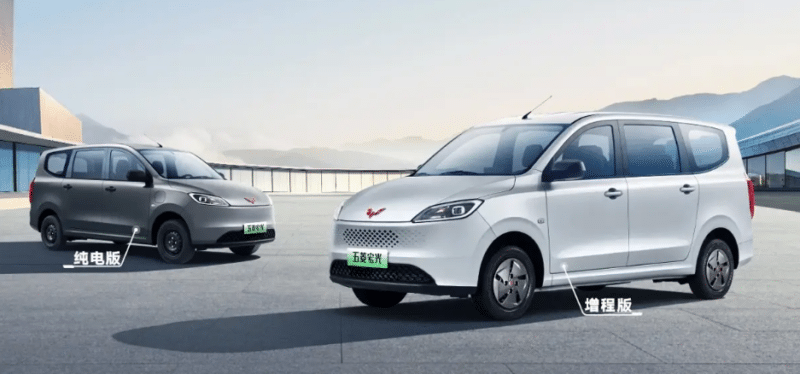The SGMW Wuling Hongguang EV offers Chinese car buyers five or seven-seat configurations, 300 km of range (that’s about 185 miles to you and me), and a $9,600 price tag – but it’s the 1000 km EREV version that would take the US by storm in 2025.
Context: this is an opinion/satire piece, so get that out of the way and have some fun.
Despite the fact that we still have the same POTUS we did in 2020 and that familiar sense of impeding, civilization-wide collapse has never quite went away after David Bowie died and they shot the gorilla, the automotive world has changed quite a bit since Tesla CEO Elon Musk announced an affordable, $25,000 Tesla “Model 2” at the company’s now infamous 2020 Battery Day event.
Back then, it seemed like just about every automaker this side of the Pacific was announcing plans to go “fully electric” by 2030 or 2035 or whatever in a cynical bid to emulate TSLA and its trillion-dollar market cap. It’s 2025 now, the shareholder cash grab didn’t take, and Toyota’s pocket Senator Joe Manchin succeeded in advancing the company’s “hybrids are electric” cause by lowering the rebate floor for battery-powered vehicles to just 7 kWh.
With batteries still being the limiting reagent in America’s EV reaction, the name of the game now is plug-in hybrids and EREVs – and with Musk buddying to the Indian and Chinese governments, US oil lobbyists, and hoping to sell more cars to a cash-strapped middle America, the timing feels right for an affordable EREV Tesla.
This is the one.
SGMW Wuling Hongguang EREV

Eggs are still $9 here in Chicago, despite what Chester Cheetah promised on the campaign trail. Rent is still high, and utility prices are about to start creeping up, too. What’s more, there are currently zero new cars with an MSRP below $20,000 for sale in the US, where the average transaction price for a new vehicle has crept up to $48,039 (more than the median annual income at the last census, by the way).
Multinational Model 2

The time is right, in other words, for Tesla to roll out a car exactly like the SGMW Wuling Hongguang EREV. And by “exactly like,” I mean exactly. Like. This is how I think a multinational Wuling Tesla rebadge Model 2 could work, and benefit all of Elon’s other plans:
- Elon buys the EREV’s (relatively) cheap, 8.5 kWh from China and ships it to India
- the battery is received by an Indian factory and mated to the unibody and interior, effectively creating a glider
- the glider (maybe it’s a roller – hard to know with an EV) ships to the US, through the
PanamaBlackRock Canal, into the Gulf ofMexicoAmerica, and into Elon’s newest Houston assembly facility, where a small gas motor is installed along with a non-nonsensevinylvegan leather interior and a Made in the USA sticker get slapped in place - the whole thing gets marked up from $9,600 to $24,999 to reclaim that “highest margins in the industry” title, but you can get $5,000 in “Freedom Fund Fun Bucks” if you send in proof you voted for the right guy
- no FSD or ADAS to keep costs down, but you can get a sweet lease deal on an Optimus robot to operate it at night for you, so it will pay for itself
- pointing out that pieces fall off makes you a bad American
If you squint, the Wuling Hongguang already looks like it might the 7/8 scale offspring of a first-gen Model Y and a Kia Rondo. Heck, Tesla might not even have to change the logo because: how many Tesla logos have they really seen in South Dakota, you know?
It wouldn’t even be the first time Tesla (or its CEO) repurposed someone else’s engineering and put their name on it. The original Tesla Roadster was essentially a re-powered Lotus Elise with a body kit, wasn’t it?
Of course it was, and this new Tesla Model 2 could be just as great, thanks to a rear-wheel drive layout paired with a relatively low-weight, sport-tuned chassis and 200 combined hp from its 1.5L range extender and 75 kW electric motor. The 8.5 kWh DCFC-capable lithium iron phosphate battery pack is good for about 35 miles (50 km) of all-electric range – but they’ll sell the car’s 1,000 km “total range.”
It might even have more genuine performance cred than this LeMans-inspired French cargo van, and that thing costs over $50K!
That’s my take, anyway – let me know what you think in the comments.
SOURCES | IMAGES: links throughout; photos by Wuling, via CarNewsChina.









